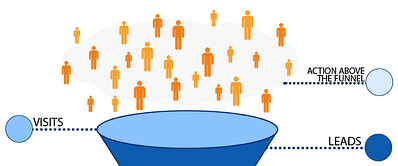 One of the great sales paradoxes that I’ve confronted is that the best time to influence someone is before they realize they need something; and once someone realizes they need something, they’re much more difficult to influence.
One of the great sales paradoxes that I’ve confronted is that the best time to influence someone is before they realize they need something; and once someone realizes they need something, they’re much more difficult to influence.
This condition is amplified in a Zero Moment of Truth (ZMOT) world where once someone knows they want something, everything they could want is just a click (or two or three) away. While the customer is often not capable (or at least qualified) to effectively curate all of the information available to them, its mere availability weakens the position of your B2B salespeople.
While tremendous amounts of attention and resources are being spent as companies fight and win “in the funnel”, I’ve noticed that a tremendous opportunity is being completely missed. That opportunity occurs “above the funnel.” It’s what I like to call The Epiphany Stage.
When a prospect is above the funnel, they’re not thinking about you, your products, services or solutions. They’re in one of two mindsets:
- Satisfied – they’re happy (or at least they think they’re happy) with their present situation, or they’re
- Neutral – they’re simply not thinking about it.
While you should never “sell” to someone who is satisfied or neutral, they represent a tremendous opportunity for marketers and lead generation. If you can connect with the right people in this stage you have the opportunity to create demand, and in many cases win the sale before the sales cycle has even begun.
Winning above the funnel requires a different approach than winning in the funnel. Your goal here should be to educate people on their problems and how to identify them. This is the place for your commercial teaching point-of-view, and where you provoke the Oh Sh&t Moment!
Here are three tactics to make it happen:
Know What’s Really Important To Your Personas
When working on defining buyer personas with my clients I always ask the question, “What do they worry about?”. Ninety-five percent of the time I get the wrong answer.
Instead of answering what the prospect worries about, I get an answer of what they worry about when they’re thinking about buying your products or services. It’s important to realize that when they’re above the funnel, they’re not worrying about you.
Instead you have to identify the problems they are aware of, and what they’re dealing with. I’ve uncovered one of the most effective ways to figure this out is to identify the five most important questions that your personas are thinking about every day.
Focus on Areas Where You’re a Partial Solution
I find that too often B2B salespeople and marketers focus on areas where they represent a total solution. For example, we worked with a printing company, and the entire focus on their message was how they offered superior printing “solutions.”
Needless to say, that effort produced virtually no results. The recruiting department rarely thought about printing, and when they did they would just call the college’s production department. This merely commoditized my client.
Instead we focused on what really mattered to their personas, one of which was college recruiting offices. Many of their best customers were small to mid-sized colleges that were constantly looking for ways to improve their recruiting efforts.
While my client clearly couldn’t solve their recruiting problems completely, they could positively impact it. With my repositioning their message around effective communication and recruiting practices, they were able to enter the conversation earlier and demonstrate the problems their customers have failed to identify.
Connect The Dots of Impact
It’s easy to look at the direct impact of your product or service. What is more powerful is to clearly identify the indirect impacts and the opportunity costs that your customers gain from your solutions.
Answer this question to begin connecting the dots: If your prospects already had your solution and were benefitting from it, what else would they be able to do? Where else would they be positively impacted?
Your answers to these questions create the focus of your above the funnel message. From there, your job is to connect these bigger issues to the direct problems you solve (sort of like connecting the knee bone and the leg bone).
When you start competing above the funnel, the entire B2B sales process changes shape. You serve as a resource to your market and sales growth becomes far more predictable and sustainable.

 Doug Davidoff
Doug Davidoff